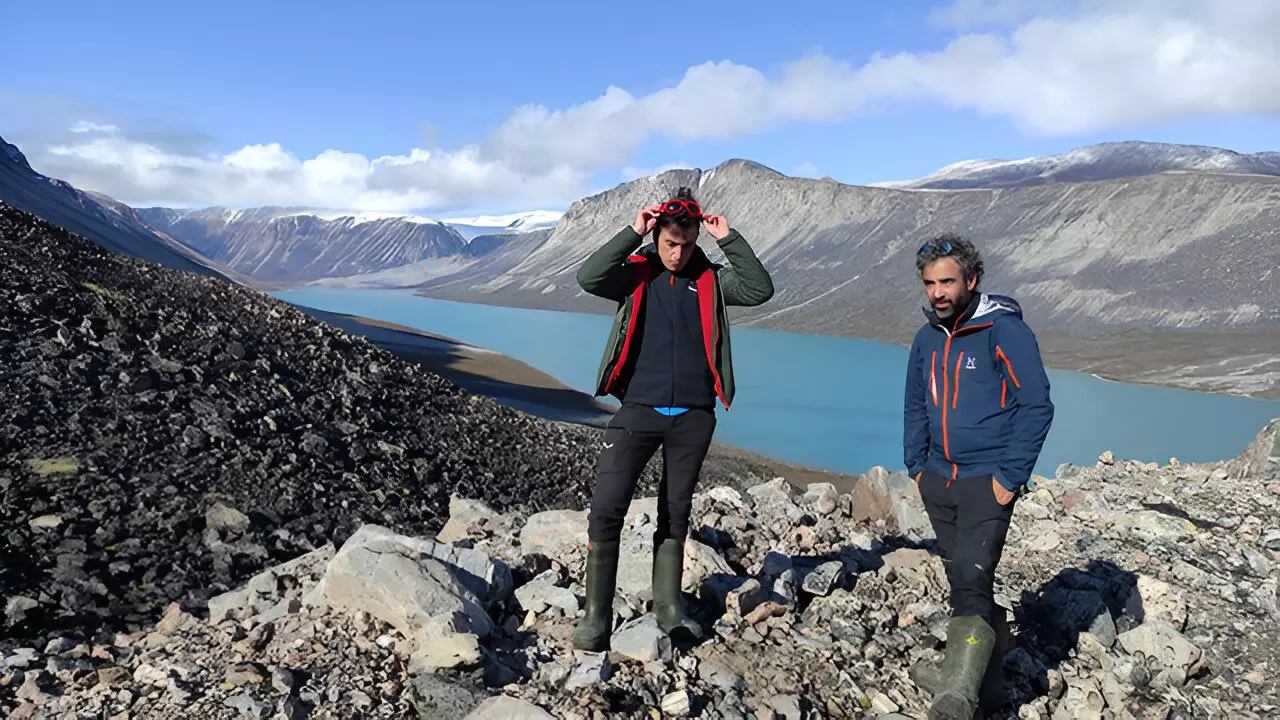The relentless march of climate change is reshaping our world in unprecedented ways, and one of the clearest — and most concerning — manifestations is the accelerated melting of ice in Greenland. This phenomenon is not merely a localized issue; its repercussions extend far beyond the Arctic, impacting global weather patterns, sea levels, and ecosystems. As highlighted in a recent study led by researchers from the University of Barcelona, the extent to which Greenland’s ice is melting has accelerated dramatically in the last few decades, presenting a dire picture for our planet’s future.
The groundbreaking research, which spans data from 1950 to 2022, reveals striking statistics about the frequency and severity of extreme melting episodes. Researchers found that these critical melting events — moments when vast stretches of Greenland’s snow and ice shed weight exponentially — have become about twice as common during summer months compared to the latter half of the 20th century. The alarming statistics speak for themselves: in 2012, an astounding 610 gigatons of ice melted, equivalent to 244 million Olympic swimming pools. Just a few years later, in 2019, another 560 gigatons met the same fate.
Going deeper into the findings, the study indicates that the average annual meltwater loss has reached around 300 gigatons between 1980 and 2010 — a volume rivaling about 48 million Olympic-sized swimming pools yearly. Moreover, roughly 40% of melting occurrences in recent decades are classified as extreme. This percentage jumps to an even more concerning 50% in Greenland’s icy extremes, particularly in the northern and northwest sectors.
The researchers assert that the melting of Greenland’s ice is inexorably linked to global warming. The Arctic region is experiencing temperature increases that are four times greater than the global average, largely as a result of greenhouse gases. This rise in temperature is suspected to have induced increasingly frequent episodes of extreme warmth characterized by warmer and wetter air masses moving in from the north. These atmospheric shifts have significant implications: they not only keep the air stagnant over Greenland, allowing for more solar radiation absorption, but also reduce the albedo effect of snow and ice — a phenomenon that typically helps to reflect sunlight and thereby cool the surface.
In a concerning twist, the ice melt is not limited to the lower elevations of the ice cap. Areas previously untouched by melting are now showing noticeable changes, including cracks and structural alterations in the ice sheet. This transformation endangers the stability of large ice blocks, raising the stakes for potential calving events — the breaking off of ice chunks into the ocean.
With the growing amount of fresh meltwater entering the ocean, the implications for global sea levels become stark. Greenland is a linchpin in the world’s fight against rising ocean levels. Its melting ice could result in widespread consequences not just for coastal cities around the globe but also for atmospheric circulation, which in turn, influences weather patterns in Europe and beyond. In fact, alterations in temperature and precipitation could disrupt socio-economic activities and ecosystems, while escalating the frequency and intensity of climate extremes across the North Atlantic region.
Importantly, the researchers stress that unchecked changes in climate scenarios point towards a continuing rise in extreme melting episodes in the foreseeable future. The bedrock of their assertion underscores an urgent call to action for reducing greenhouse gas emissions — a measure vital for mitigating the severe impacts of climate change. They draw a straight line between lifestyle choices today and the climate our children will inherit, emphasizing the immediate need for sustainable practices to curb these alarming trends.
The accelerating ice melt in Greenland serves as a chilling reminder of the urgent need for global responsibility regarding climate change. The alarming statistics presented by this research paint a vivid picture of a world in crisis, calling on individuals, governments, and organizations worldwide to take decisive steps toward sustainability. The fate of our planet hangs in the balance, intricately tied to how we address these pressing environmental challenges. As we look towards the future, let us remember that the cost of inaction is far greater than the sacrifices required to foster a healthier planet.


Leave a Reply